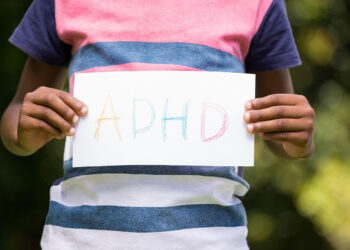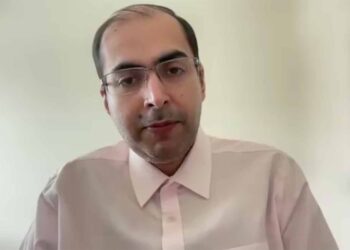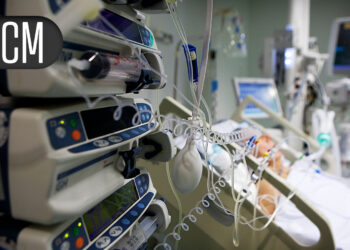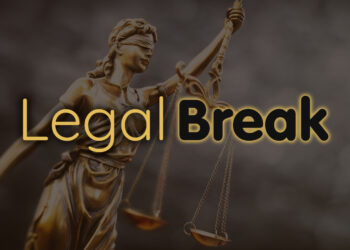Psilocybin therapy reduced depression symptoms in clinicians who developed these symptoms after frontline clinical work during the COVID-19 pandemic, a small randomized trial showed.
At day 28, the mean change in Montgomery-Åsberg Depression Rating Scale (MADRS) score was -21.33 compared with -9.33 for those who received niacin (P
“This 21-point decrease in MADRS scores is striking when a 6- to 9-point change in the MADRS is considered clinically meaningful,” Back’s group pointed out in JAMA Network Open.
These findings could establish psilocybin-assisted therapy “as a new paradigm of treatment for this post-pandemic condition and add to the evidence of psilocybin therapy for depression,” they added.
Working on the frontlines during the pandemic was psychologically challenging for many clinicians, even for those without pre-existing mental health issues, Back and team noted. During this time, clinicians were dealing with “intense suffering, high death rates, decision-making under extreme uncertainty, prolonged work shifts, fear for their own and their families’ safety, and isolation due to self-quarantine,” they wrote, which contributed to burnout, depression, and post-traumatic stress disorder.
Since psilocybin has previously shown promise in prior studies for depression, Back’s group wanted to test its effects in this specific population.
All participants had to have more than 1 month of direct frontline clinical care experience during the pandemic and meet at least two of four items on a COVID occupational exposure index as occurring more than half of the day during that time. Items included caring for a patient critically ill with COVID, working longer hours to provide care to patients with COVID, witnessing or responding to a death from COVID, or caring for a patient who died without their family present due to pandemic-related precautions.
Clinicians also had to have a MADRS score of at least 21 (score range 0 to 60), indicating moderate or severe symptoms of depression at enrollment.
The cohort was evenly divided among male and female participants, average age was 38, and 83% were white. Half were medical doctors, 37% were registered nurses, and 13% were nurse practitioners or physician assistants. Of the participants, 46% worked in critical care, 37% worked in acute care, and 17% worked in the emergency department.
Patients in the psilocybin arm were administered a 25-mg oral dose, while the niacin arm was given a 100-mg oral dose. During the 7-hour session, the medication was administered with elements of secular ceremony that could be changed in congruence with the participant’s own beliefs or spirituality.
Participants then attended three integration sessions, which allowed them to “take some time amid the urgency of their professional and personal lives to feel all of their feelings, find some perspective on their recent past, and come to terms with what they were unable to do — and what they were able to accomplish — for patients, families, colleagues, and society,” Back and team explained.
Issues that participants brought up during these sessions indicated “a complex psychological landscape that would be difficult for any individual to navigate alone,” they wrote. “Clinicians described a sense of betrayal by health systems, leaders, and colleagues; guilt from feeling that they had not been able to do enough; and grief from witnessing innumerable deaths and suffering. The question that repeatedly came up, in different forms, was ‘Do I matter?'”
Psilocybin participants also had numerically greater decreases in Stanford Professional Fulfillment Index (SPFI) scores — a measure of burnout — and Posttraumatic Stress Disorder Checklist for Diagnostic and Statistical Manual of Mental Disorders, Fifth Edition (PCL-5) scores:
- SPFI score: -6.40 with psilocybin vs -2.33 with niacin
- PCL-5 scores: -16.67 with psilocybin vs -6.73 with niacin
In addition, the psilocybin group had a numerically greater depth of the medication experience compared with niacin as measured by the Mystical Experience Questionnaire, 30 Questions score (average score 129.40 vs 15.07).
No serious adverse events or psychosis events occurred. A few reports of mild nausea, mild headache, mild tachycardia, and hypertension that resolved within 20 minutes occurred after psilocybin dosing. One psilocybin participant had transient suicidal ideation without intention on day 28, but this didn’t recur.
Twelve participants from the niacin group went on to receive one session of open-label psilocybin, and average MADRS score significantly dropped by another 12.83 points (95% CI -18.29 to -7.38) by day 28.
During 6-month follow-up, no participants left the healthcare field, but 70% reported a substantial change in their job responsibilities or institution. Only 27% remained in the same position, and one remained unemployed.
Although nearly 2,500 clinicians expressed interest in the study, the trial was limited by the small number it was able to enroll. Also, while the trial was blinded, participants and facilitators were able to distinguish niacin from psilocybin within 2 hours of administration “with 100% precision.”
Disclosures
The study was funded by the Steven and Alexandra Cohen Foundation, with supplemental funding for an interprofessional, diverse study facilitator team by the Riverstyx Foundation and the Rita and Alex Hillman Foundation. Back also received an educational grant from Cybin to the University of Washington.
Back reported no conflicts of interest.
Co-authors reported relationships with the University of Washington, Quantified Citizen Technologies, MycoMedica Life Sciences, the Psychedelic Data Society, the Ketamine Assisted Therapy Association of Canada, and Wavepaths.
Primary Source
JAMA Network Open
Source Reference: Back AL, et al “Psilocybin therapy for clinicians with symptoms of depression from frontline care during the COVID-19 pandemic: a randomized clinical trial” JAMA Netw Open 2024; DOI: 10.1001/jamanetworkopen.2024.49026.
Source link : https://www.medpagetoday.com/psychiatry/depression/113239
Author :
Publish date : 2024-12-05 21:09:49
Copyright for syndicated content belongs to the linked Source.


![author['full_name']](https://newshealth.biz/wp-content/uploads/2024/12/Psilocybin-Cut-Depression-Symptoms-in-COVIDs-Frontline-Healthcare-Workers.jpg)












